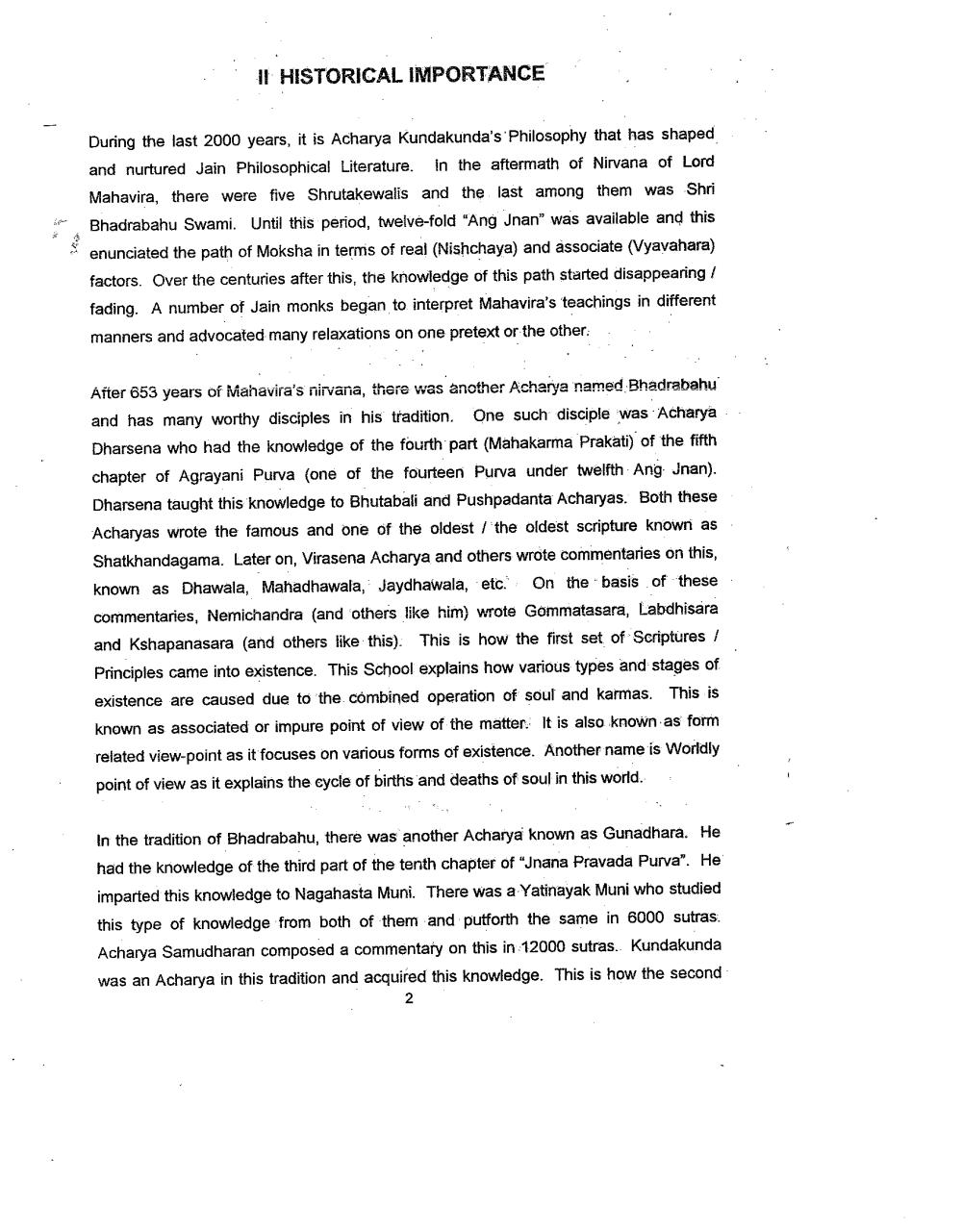________________
II HISTORICAL IMPORTANCE
During the last 2000 years, it is Acharya Kundakunda's Philosophy that has shaped and nurtured Jain Philosophical Literature. In the aftermath of Nirvana of Lord Mahavira, there were five Shrutakewalis and the last among them was Shri Bhadrabahu Swami. Until this period, twelve-fold "Ang Jnan" was available and this enunciated the path of Moksha in terms of real (Nishchaya) and associate (Vyavahara) factors. Over the centuries after this, the knowledge of this path started disappearing / fading. A number of Jain monks began to interpret Mahavira's teachings in different manners and advocated many relaxations on one pretext or the other...
After 653 years of Mahavira's nirvana, there was another Acharya named Bhadrabahu and has many worthy disciples in his tradition. One such disciple was Acharya Dharsena who had the knowledge of the fourth part (Mahakarma Prakati) of the fifth chapter of Agrayani Purva (one of the fourteen Purva under twelfth Ang Jnan). Dharsena taught this knowledge to Bhutabali and Pushpadanta Acharyas. Both these Acharyas wrote the famous and one of the oldest / the oldest scripture known as Shatkhandagama. Later on, Virasena Acharya and others wrote commentaries on this, known as Dhawala, Mahadhawala, Jaydhawala, etc. On the basis of these commentaries, Nemichandra (and others like him) wrote Gommatasara, Labdhisara and Kshapanasara (and others like this). This is how the first set of Scriptures / Principles came into existence. This School explains how various types and stages of existence are caused due to the combined operation of soul and karmas. This is known as associated or impure point of view of the matter. It is also known as form related view-point as it focuses on various forms of existence. Another name is Worldly point of view as it explains the cycle of births and deaths of soul in this world.
In the tradition of Bhadrabahu, there was another Acharya known as Gunadhara. He had the knowledge of the third part of the tenth chapter of "Jnana Pravada Purva". He imparted this knowledge to Nagahasta Muni. There was a Yatinayak Muni who studied this type of knowledge from both of them and putforth the same in 6000 sutras. Acharya Samudharan composed a commentary on this in 12000 sutras. Kundakunda was an Acharya in this tradition and acquired this knowledge. This is how the second




